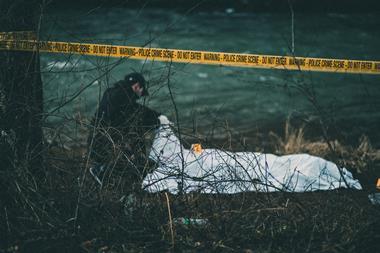Patricia Wiltshire
Blink Publishing
2019 | 304pp | £20
ISBN 9781788700610
Buy this book from Amazon.co.uk

Everywhere we go, tiny particles leave their mark on us. Soils containing all manner of biological materials become ingrained on the soles of our shoes; pollen and fungal spores attach themselves to our hair and to our clothes. With a well-trained eye (and microscope), this information can be used to create a surprisingly detailed picture of where we’ve been and what we’ve been doing.
Traces is an autobiographical account from Patricia Wiltshire, a pioneering forensic scientist whose expertise in botany, mycology, ecology and palynology has provided essential evidence in hundreds of high-profile criminal cases. The book describes how Wiltshire, who first honed her skills on archaeological sites, became involved in detective work and how over the following 25 years she single-handedly established techniques and protocols to gain the greatest insights from the smallest clues.
A word of warning: Traces is definitely not for anyone who might be easily upset by descriptions of violent crimes, or graphic accounts from crime scenes and mortuaries. The book’s focus on forensics necessitates detailed discussion of brutal and tragic events, and the harrowing investigations that follow. I’m not easily shocked, but some passages of the book certainly left me questioning my decision to read before bed.
Gruesome details aside, Traces is a fascinating story of how very specific scientific knowledge can be applied in unusual circumstances to reveal information that may be inaccessible by other means. The importance of Wiltshire’s work in ensuring justice is done – helping to elicit confessions, securing convictions and exonerating innocent parties – can’t be overstated.
I particularly liked the matter-of-fact tone with which the book is written, even when dealing with situations that might make readers’ stomachs turn. Wiltshire does a great job of describing the reality of this type of work, dispelling the myths of glamour with which forensic science is often associated in TV shows. She repeatedly emphasises the painstaking laboratory processes that must be carried out to ensure any evidence and conclusions stand up to scrutiny in court.
For any students considering a career in forensics, this book is essential reading that may help open your eyes to the true nature of forensic investigations. For other readers, the casual fans of pop science who don’t fancy excavating shallow graves for a living, Traces is a gripping and informative read – part thriller, part botany lesson. I highly recommend it.












No comments yet